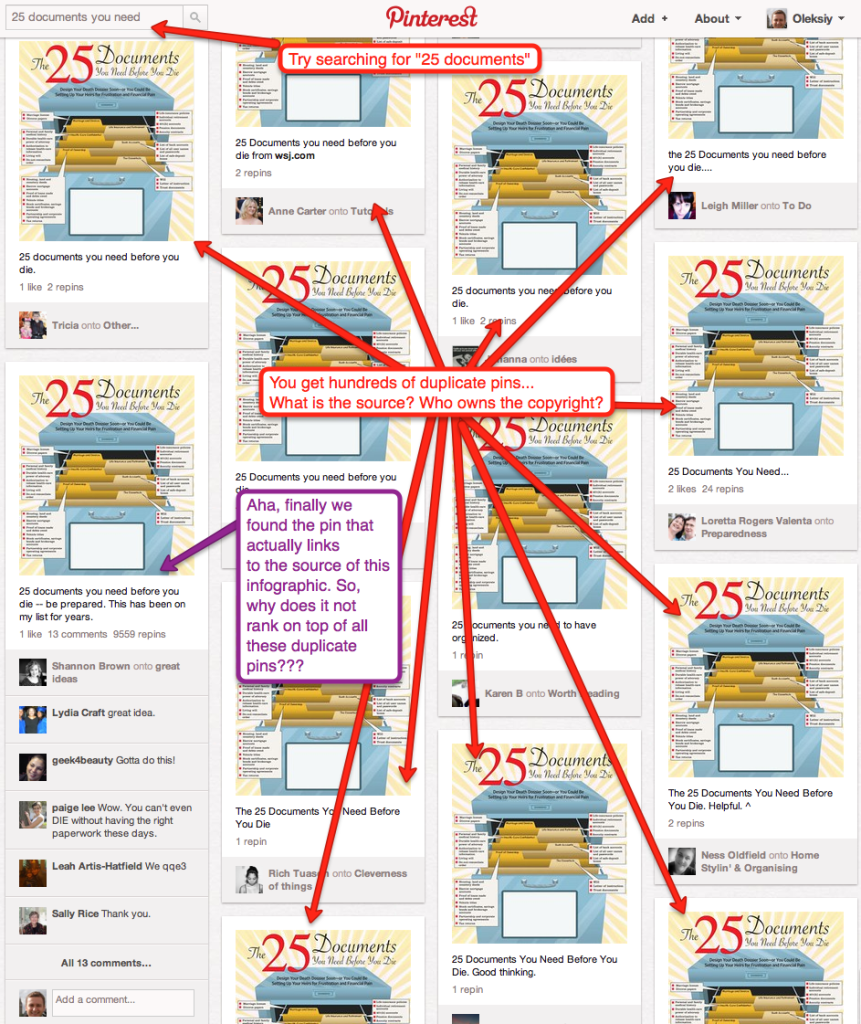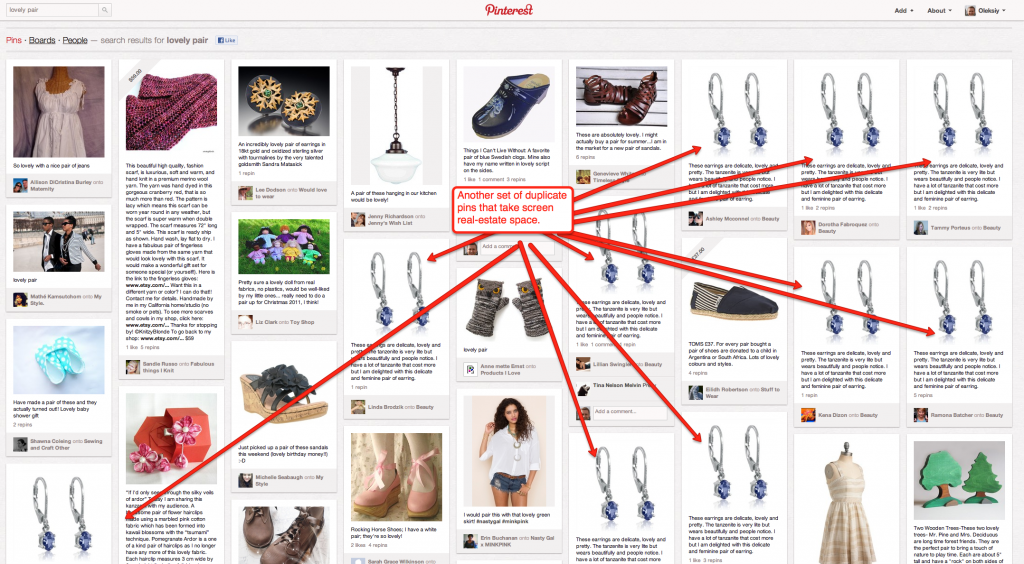Pinterest has become a popular discussion topic among digital marketers, and it definitely generated a lot of attention and curiosity in the blogosphere. While there are plenty of articles written about what this aspiring social network does and how to use it, I would like to point out one flaw that I discovered this morning after performing a search on Pinterest hoping to find the WSJ’s infographic titled “25 documents you need before you die.“
After I typed in “25 documents” keyword into the Pinterest’s search bar and clicked the search button, I was presented with a never-ending wall of identical infographics populating my screen like raindrops on my window. Even though I could find the infographic that I needed, I was not sure which thumbnail to click and where the original source was, as I wanted to credit the creator of the content.
My strategy was to locate the original source by looking at the number of repins and likes, and the infographic that had the highest number of both repins and likes should be the one I would reference in my blog post. After spending 2 minutes scanning each thumbnail image (most of them either had no likes or repins or carried 1-5 likes and repins), I finally found the treasure buried way down the bottom of this search results wall. The original pin had 1 like, 13 comments and 9558 repins.
I thought that I should perform another search using a different keyword and see how this would affect my findings. When I searched for “lovely pair,” I was shown a SERP that also contained multiple instances of the duplicate content that moved the unique pins below the screen fold, which did not add value to user experience.
I think that Pinterest’s search functionality is flawed. The user who created the content and was the first one to make it available on the social network should get proper credit and be featured on the search results page above users who copied the pin and made it look like it was them who brought this new piece of content to the table. Additionally, the pin that generated the highest number of repins and likes should also be featured on the top of the search results list. Finally, it would be helpful if Pinterest utilized image recognition software in order to not display hundreds of identical pins on the search results wall. The latter will improve user experience and encourage Pinterest users to generate unique and engaging content.
What do you think of Pinterest’s search? Please share your comments below.
Author: John Miller
John oftentimes takes the lead as the Agile Project Manager and SEO expert, which allows him to be hands-on with the latest trends.

